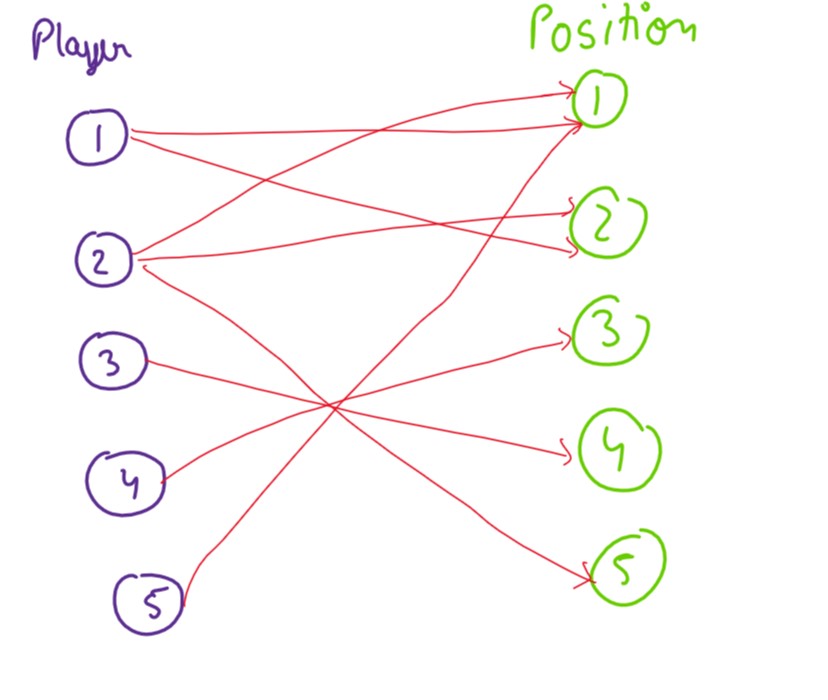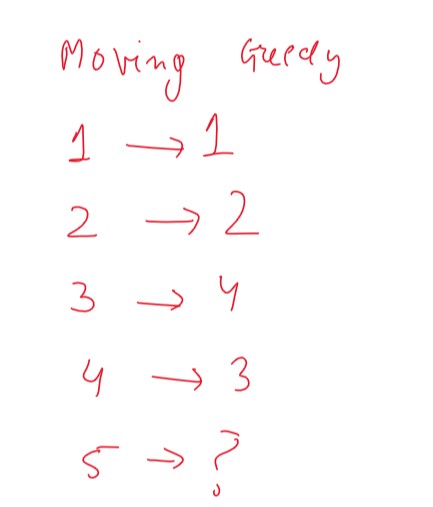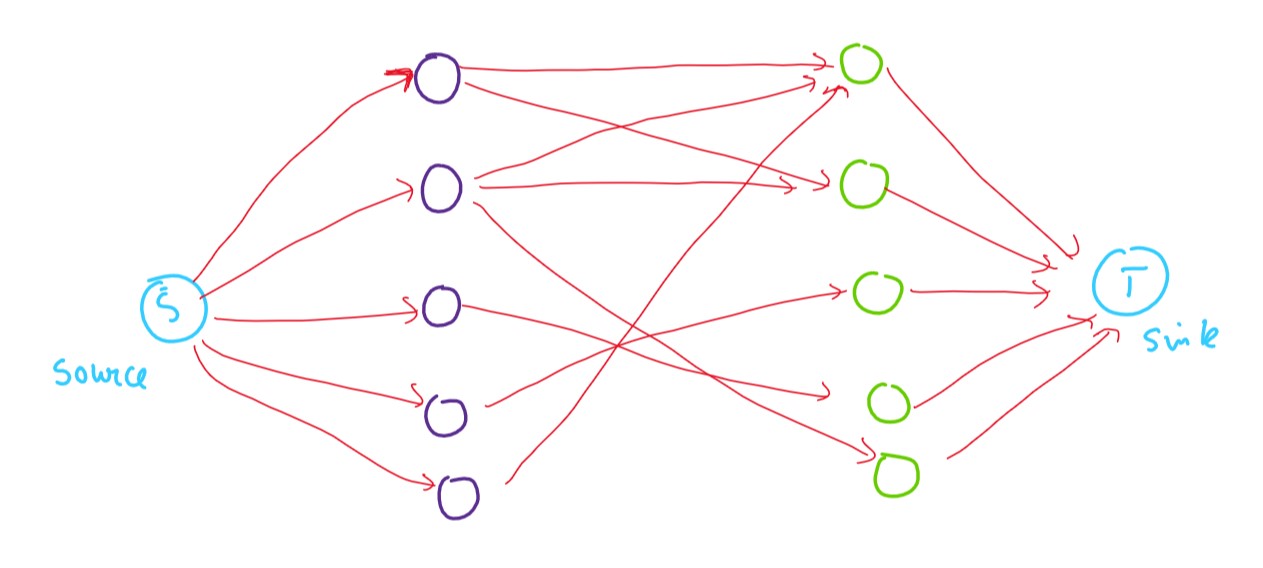Maximum Bipartite Matching
Let us say i have 7 batters, these 7 are the best in the nation so i want to play all of them. I have 7 positions in the team, each batter has his own prefernce that is he wants to play at a certain position. Using Maximum Bipartite Matching it would be easy to determine if the players would be able to play. That every position must have a single batsman
Greedy won’t work

This is an example, right now i have taken info about five players.
If we go greedy, that is i will move from 1st player to 5th player and for each player i would select the first position that is available.
In that case:

But the optimum answer would be:

This can be solved by Using Ford Fulkerson Algorithm for max flow.
We would need to change the graph a bit, we will add a dummy source and sink node, a source node will have outgoing edge to all the players and sink will have an incoming edge from all the positions.
The graph would look like:

Here an edge can have 2 values that is either 1 or 0. 1 meaning the batsman is going to play at that position, 0 meaning the opposite. We would apply Ford-Fulkerson Algorithm for max flow between Source and Sink which will give us our desired outcome.
Ford - Fulkerson Psuedo code
- Set Total flow equal to 0
- Repeat the below steps till we have a valid path from source s to sink t
- Run depth first search to find the path from s to t
- Let the minimum capacity value on the path be f
- Add f to the total flow
- On this path for every edge we need to do
- Decrease capacity of edge u->v by f
- Increase capacity of edge v->u by f
code
int sent = dfs(s,t,LARGE_NUMBER);
while (sent >0) {
max_flow += sent;
memset(visited, 0, sizeof(visited));
sent = dfs(s,t,LARGE_NUMBER);
}
// the dfs function is
int dfs(int s, int t, int minimum) {
visited[s] = true;
if (s == t)
return minimum;
for (int i = 0; i < N; i++) {
int flow_capacity = graph[s][i] - Flow[s][i];
if (!visited[i] && flow_capacity > 0) {
if (int sent = dfs (i, t, min (minimum, flow_capacity))) {
Flow[s][i] += sent;
Flow[i][s] -= sent;
return sent;
}
}
}
return false;
}